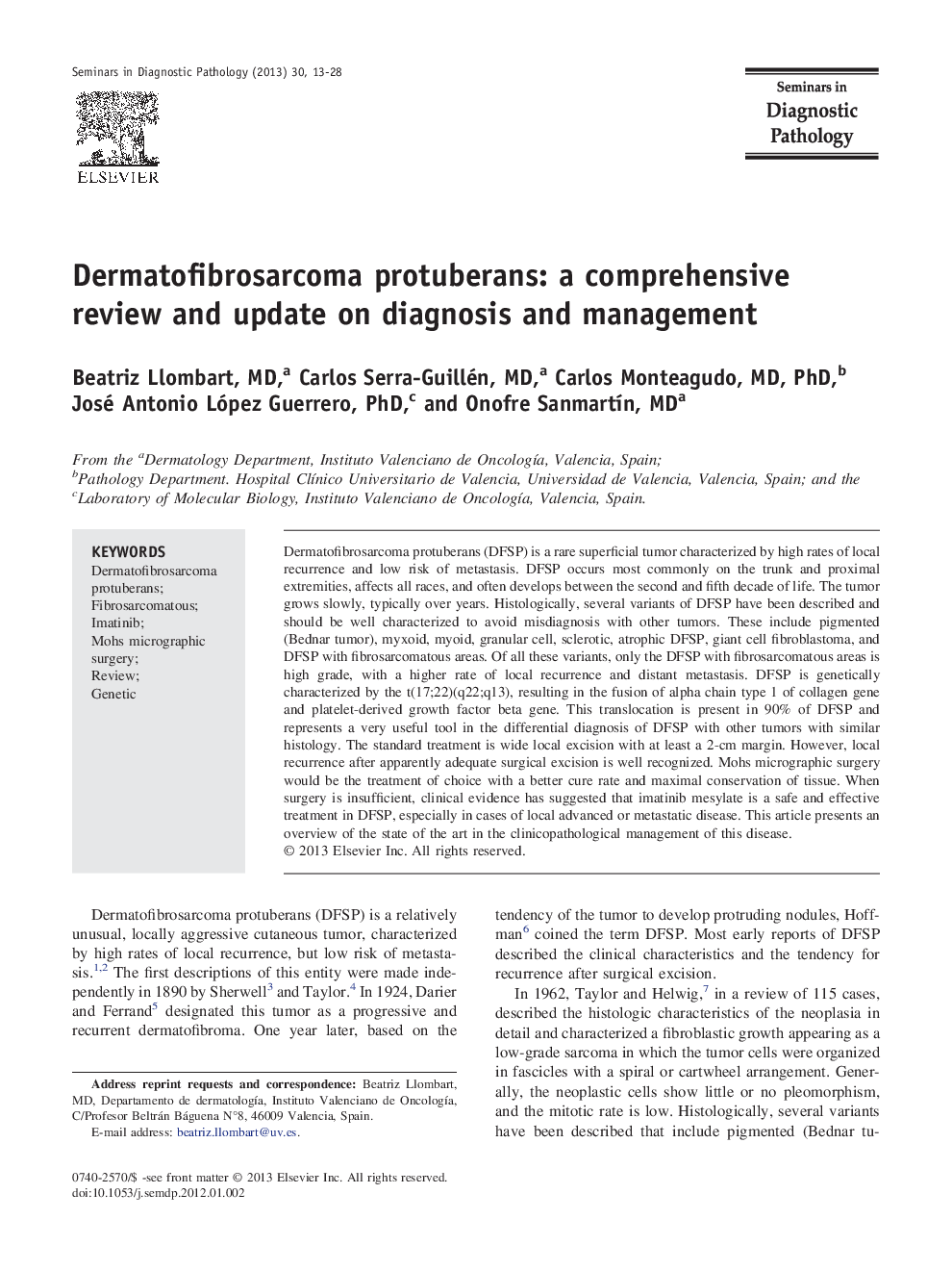| Article ID | Journal | Published Year | Pages | File Type |
|---|---|---|---|---|
| 4138577 | Seminars in Diagnostic Pathology | 2013 | 16 Pages |
Dermatofibrosarcoma protuberans (DFSP) is a rare superficial tumor characterized by high rates of local recurrence and low risk of metastasis. DFSP occurs most commonly on the trunk and proximal extremities, affects all races, and often develops between the second and fifth decade of life. The tumor grows slowly, typically over years. Histologically, several variants of DFSP have been described and should be well characterized to avoid misdiagnosis with other tumors. These include pigmented (Bednar tumor), myxoid, myoid, granular cell, sclerotic, atrophic DFSP, giant cell fibroblastoma, and DFSP with fibrosarcomatous areas. Of all these variants, only the DFSP with fibrosarcomatous areas is high grade, with a higher rate of local recurrence and distant metastasis. DFSP is genetically characterized by the t(17;22)(q22;q13), resulting in the fusion of alpha chain type 1 of collagen gene and platelet-derived growth factor beta gene. This translocation is present in 90% of DFSP and represents a very useful tool in the differential diagnosis of DFSP with other tumors with similar histology. The standard treatment is wide local excision with at least a 2-cm margin. However, local recurrence after apparently adequate surgical excision is well recognized. Mohs micrographic surgery would be the treatment of choice with a better cure rate and maximal conservation of tissue. When surgery is insufficient, clinical evidence has suggested that imatinib mesylate is a safe and effective treatment in DFSP, especially in cases of local advanced or metastatic disease. This article presents an overview of the state of the art in the clinicopathological management of this disease.
